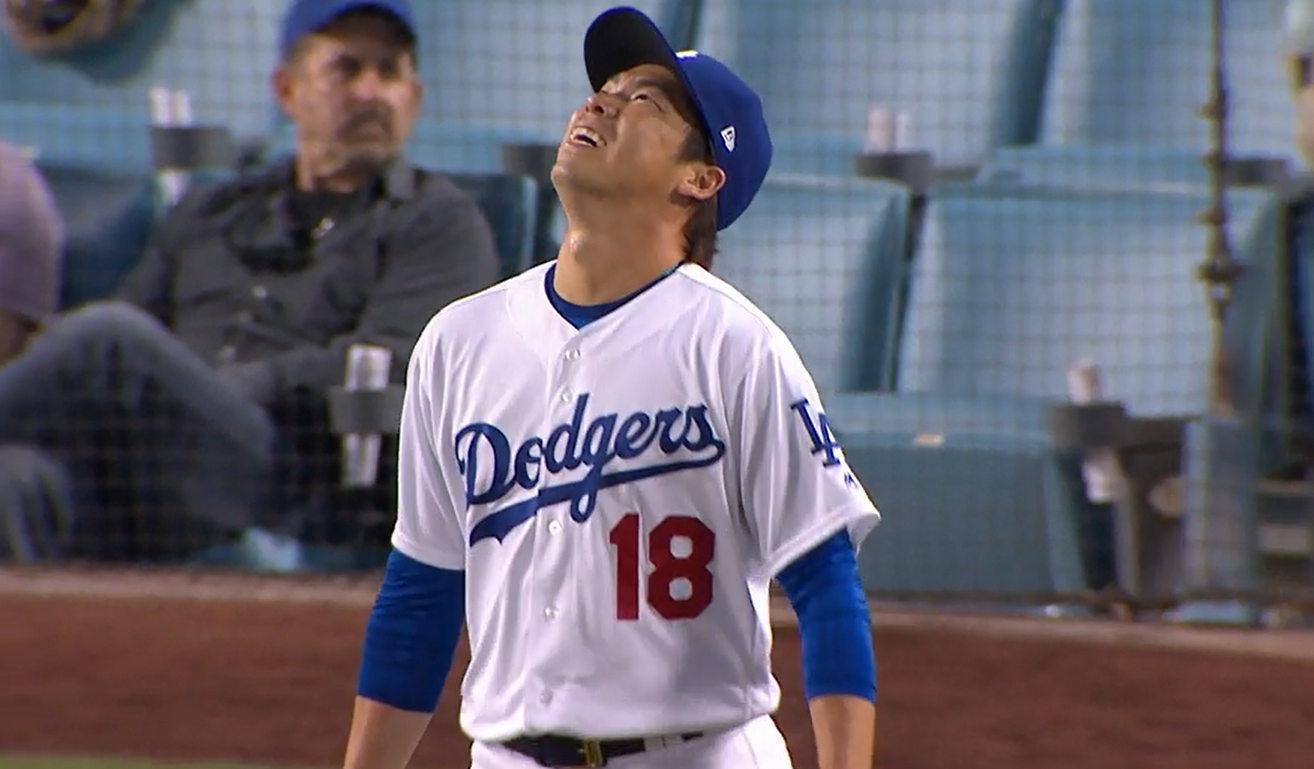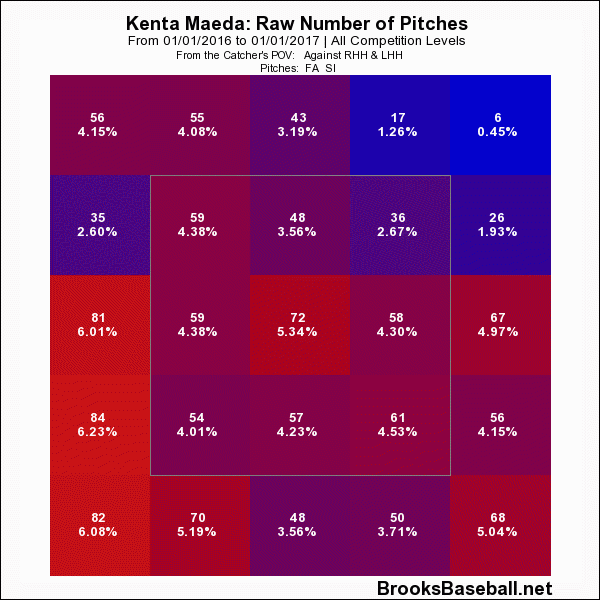Kenta Maeda is struggling and the Dodgers are searching for an answer, and feeling inspired by Brim’s post about Hyun-Jin Ryu‘s problematic fastball, I decided to look at Maeda’s struggles with the pitch as well.
Velocity doesn’t seem to be the issue here, as his fastball is actually up to 91.3 mph compared to 90.0 mph in 2016. In fact, Dave Roberts speculates that the uptick in velocity might be the whole problem.
The key difference, in Roberts’ mind, is Maeda attempting to generate extra velocity on his fastball. That effort translates to poor location — and flyballs soaring in the opposite direction.
“Kenta is a guy who has great feel, and has the ability to locate the baseball,” Roberts said. “In his starts this year, he hasn’t located that fastball.”
Perhaps Maeda let the talk of him wilting late last year or not being strong enough for the MLB get to him and now he’s trying to do too much. Regardless, Roberts appears to be correct about Maeda’s fastball command deteriorating.
The difference there should be obvious to anybody who has watched Maeda pitch this year as opposed to last year, especially his most recent start. The difference in the results is as drastic: .212 AVG/.397 SLG/.185 ISO (2016 Fastball) and .319 AVG/.403 SLG/.083 ISO (2016 Sinker) against .345 AVG/.724 SLG/.379 ISO (2017 Fastball) in 29 at-bats and .000 AVG/.000 SLG/.000 ISO (2017 Sinker) in two at-bats.
That is to say, so far the “adjustment” against Maeda seems to be “hit the fastball with fringe velocity left up over the middle of the plate for dingers.” And unfortunately for whatever reason Maeda has been more than happy to oblige.
As I said the other day, he deserves the chance to turn it around, and he definitely won’t be this terrible regardless. However, the fastball is definitely a problem and concern at the moment, and nothing gets solved until it improves.
——
It is, however, important for me to make a note that while the 2017 struggles are legit, this has little to do with 2016. The most common response to my recap regarding Kenta was this insistence that he was bad in 2016 or the whole second half. That is, quite frankly, a load of shit.
Aside from April, that looks like a normal pitcher having some peaks and valleys but without much of a trend that people are so eager to believe in to make themselves seem on it. In fact, September was one of his best months, and that covers a period where he was likely struggling with fatigue, but the combination of a unlucky run of balls in play and attempts at stranding runners lead to an inflated ERA.
Contrary to popular belief, I would assert that if an adjustment to him came, it came in May — because I’m skeptical it took until August to get scouting reports out on Maeda. Excluding April, Maeda posted a 3.95 ERA, 3.74 FIP and 3.71 xFIP, which is still a quality starter on a playoff team, and an ERA in the mid-to-high 3 range was more what I expected in 2017.
Still, as an example of why his 2016 was appreciated at the time, from July 23 to Sept. 21, Maeda didn’t give up more than three runs and didn’t go less than five innings in a start. Was he pitching like an ace? No, but to paint that as some kind of second-half collapse because his April was unrealistically good is a comical assertion. Maeda during that time period was praised because he was the only one taking the ball and keeping the team in the game in all of his starts. That can still be true despite his struggles in 2017.
——
Kenta had previously never given up 17 runs in a four-start stretch, so this is definitely an unprecedented struggle right now. But it is a 2017 problem, because it’s now that his fastball command is significantly worse, and there’s no reason to add onto those concerns because of what happened in 2016.
The Dodgers at least seem to be conscious of what needs to be fixed, and it’s just a matter of actually repairing the damage and executing from here on out. Here’s hoping Kenta and the coaches manage to do it, because the Dodgers could use a guy like him providing a sense of stability to the rotation once again.
 Dodgers Digest Los Angeles Dodgers Baseball Blog
Dodgers Digest Los Angeles Dodgers Baseball Blog



